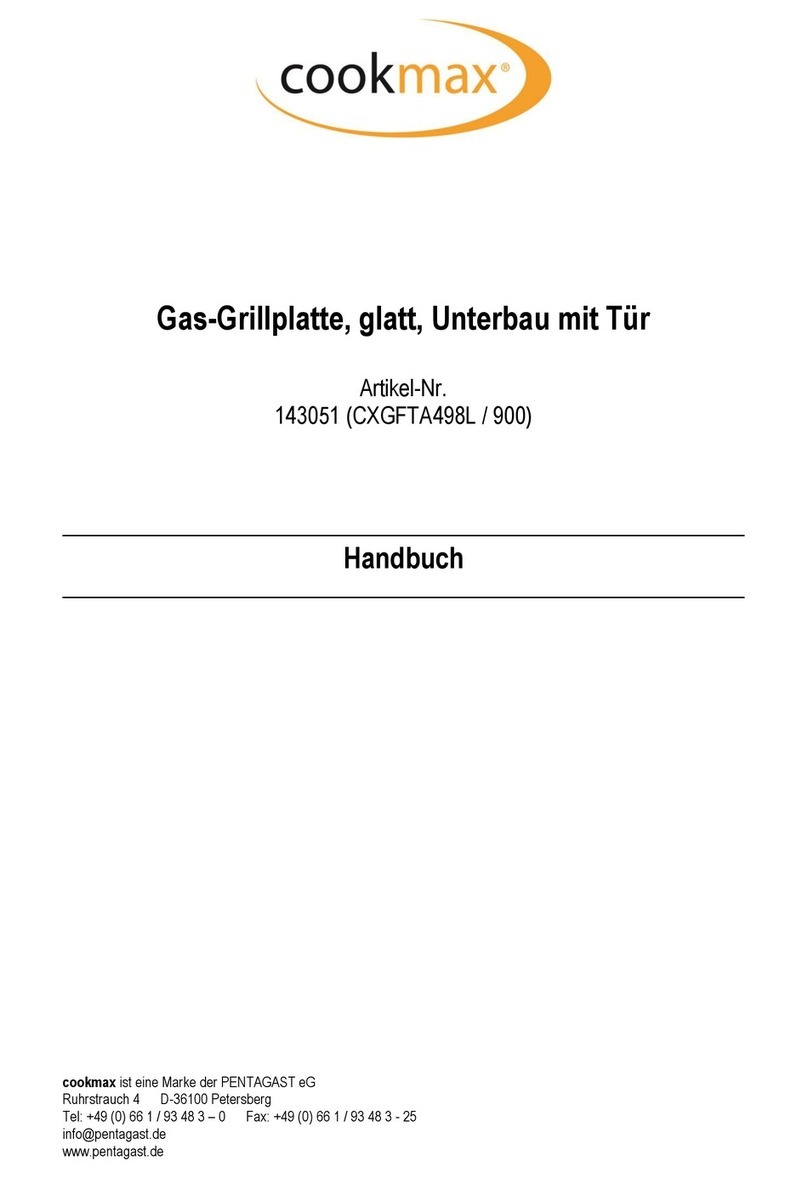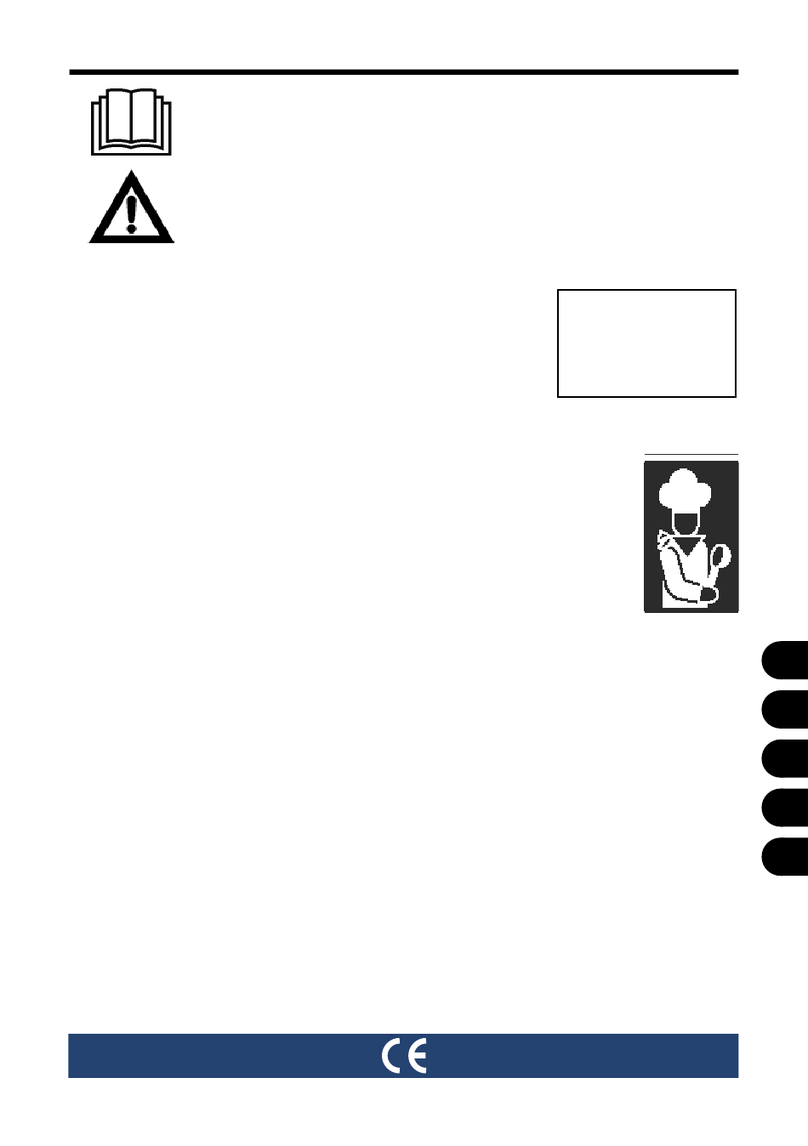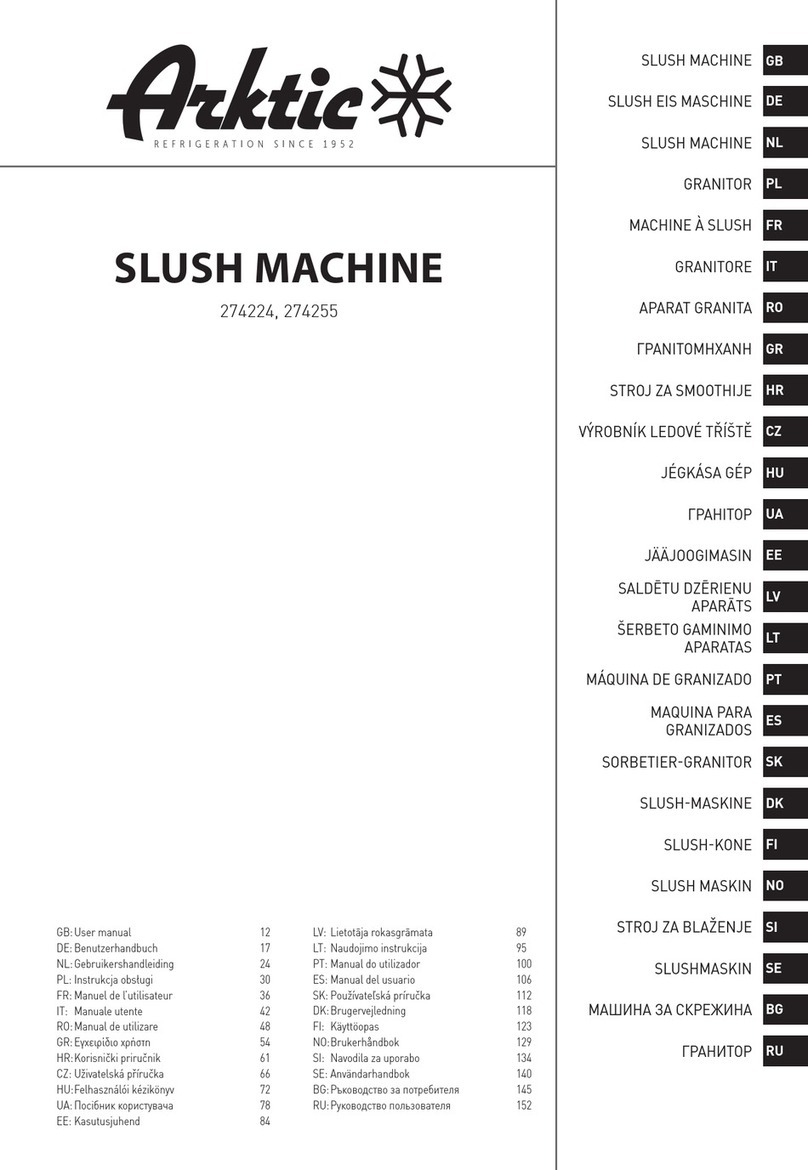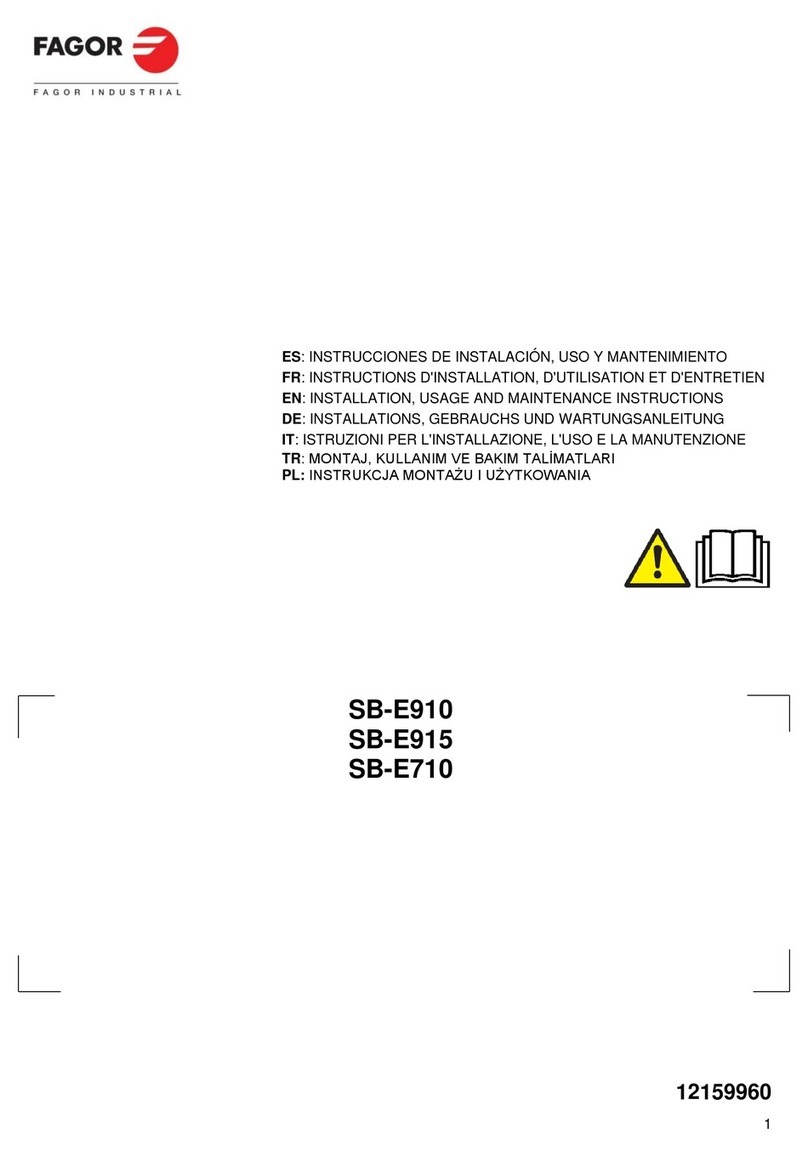BELFORNO 32 User manual

Commercial and Residential Wood Fired Ovens
Installation and Operating Instructions
Belforno32 (SKUBEL100101)
Belforno36 (SKUBEL100102)
Belforno40 (SKUBEL100103)
Belforno44 (SKUBEL100104)
Belforno48 (SKUBEL100105)
Belforno56 (SKUBEL100106)
SAVE THESE INSTRUCTIONS
BE SURE TO READ THE TIPS FOR ASSEMBLY ON PAGES 14 AND 15
Listed UL2162 and UL737; Certified NSF/ANSI-4

Commercial and Residential Wood Fired Ovens
Installation and Operating Instructions
© Belforno Inc. 2012-2015. All rights reserved. Version 1.8 2
Belforno Inc.
Modular Refractory Oven, including
Belforno32 (SKUBEL100101)
Belforno36 (SKUBEL100102)
Belforno40 (SKUBEL100103)
Belforno44 (SKUBEL100104)
Belforno48 (SKUBEL100105)
Belforno56 (SKUBEL100106)
SAVE THESE INSTRUCTIONS. READ ALL INSTRUCTIONS CAREFULLY BEFORE INSTALLING
AND USING THE APPLIANCE.
A MAJOR CAUSE OF OVEN-RELATED FIRE IS FAILURE TO MAINTIAN REQUIRED CLEARANCES
(AIR SPACES) TO COMBUSTIBLE MATERIALS. IT IS OF UTMOST IMPORTANCE THAT THIS OVEN
BE INSTALLED ONLY IN ACCORDANCE WITH THESE INSTRUCTIONS.
If this oven is not properly installed, a fire may result. To reduce the risk of fire, follow the installation
instructions. Please read this entire manual before you install the oven. Failure to follow instructions may
result in property damage, bodily injury, or even death. The installer should contact the local building or
fire officials concerning any installation restrictions and the need for inspection(s) of the oven and venting
applications before beginning installation. Obtain the necessary permit to construct. In most areas this will
include a permit to construct the oven and a permit for the exhaust system. Sometimes an electrical
permit is also necessary for connecting the exhaust fan. All construction must comply with local building
codes. There are some portions of these instructions which are more restrictive than the building codes.
Whichever is most restrictive must be followed. It is essential to use only building and insulation materials
designed for the purpose. Use proper safety equipment when installing this oven, including gloves and
professional breathing masks. Contact your local building or fire officials for clarification on any
restrictions on installation of this oven in your area, or need for inspection of the oven installation.
This oven is a heat producing appliance and may cause severe burns if touched. Do not overheat. This
unit is designed as a wood-fired oven. Only pizza and bread products should have direct contact with
hearth. Retain a properly rated fire extinguisher close to the oven at all times.
Only burn dry untreated solid wood fuel or gas in the oven. Never burn liquid fuel in the oven. Do not burn
charcoals, coals, trash/garbage or manufactured logs (processed solid fuel).
Beware of flying sparks from mouth of oven. Ensure that no combustible materials are within range of
oven at any time. Do not close the oven door fully while a fire is in the oven. Closing the door fully will cut
off oxygen to the fire, causing the fire to erupt suddenly when the door is removed. Do not douse or
extinguish fire in the oven with water.

Commercial and Residential Wood Fired Ovens
Installation and Operating Instructions
© Belforno Inc. 2012-2015. All rights reserved. Version 1.8 3
Follow the manufacturer’s recommended instructions for curing the oven. Failure to follow the curing
schedule can cause damage to the oven, and void the oven warranty.
1. MINIMUM INSTALLATION CLEARANCES
The oven shall be installed a minimum of 1" away from combustible material from back and side walls to
oven and 14” above the oven. In addition, there must be clearance of minimum 30” from combustible
material adjacent to the sides of the oven opening. If the distance is less than 30 inches a wall shield
must be mounted on the wall. Any adjacent combustible floor which projects in front of the oven opening
must be a minimum of 36” from the front of the door opening. (Figure1)
WARNING: Do not place any type of insulation in the required clearance spaces surrounding the oven.
NOTE: FOR HEALTH DEPARTMENT REQUIREMENTS ANY 1-INCH AIR GAP ADJACENT TO A
COMBUSTIBLE WALL MUST BE SEALED WITH A NON COMBUSTIBLE STRIP. i.e. ALUMINUM,
STAINLESS STEEL OR TILE.
Figure 1

Commercial and Residential Wood Fired Ovens
Installation and Operating Instructions
© Belforno Inc. 2012-2015. All rights reserved. Version 1.8 4
2. LIST OF PARTS AND MATERIALS:
The following components are supplied and standard in every kit:
Refractory dome components including vent
2” Refractory cooking floor components
3” Ceramic blanket insulation
2” Ceramic board
Steel door
10 lbs Belforno high-heat refractory mortar
Pizza peel
Infrared Thermometer
Some additional materials may be required:
Stainless steel UL103 double wall chimney system
20 Gauge Poultry mesh
Galvanized wire
All-purpose mortar
Clean building sand
Exterior decorative finish materials such as stucco, tiles, bricks etc.
Bricks or blocks
Wood forms
Oven brush, ash shovel
Additional pizza peels
3. STEP-BY-STEP INSTRUCTIONS FOR OVEN ASSEMBLY
Here is an overview of the typical steps required for the assembly of the Belforno oven:
1. Determine where the oven will be located and estimate the availability of space. Initially, allow for
an area of about 5’ x 5’ to 6’ x 6’ with sufficient room in front of the oven for the unhindered use of
a long-handled pizza peel.
2. Decide what style you want, either enclosed, or igloo.
3. Design the oven.
4. Prepare the area.
5. Build the base.
6. Assemble the oven.
7. Finish the oven in the style you have chosen, either enclosed or igloo.
8. Cure the oven.
9. Start cooking!
CAUTION: Refractory components are heavy. Special care MUST be exercised when lifting components.
Always follow requirements of local codes and other safety standards.

Commercial and Residential Wood Fired Ovens
Installation and Operating Instructions
© Belforno Inc. 2012-2015. All rights reserved. Version 1.8 5
a. PREPARATION
The Belforno oven is constructed on a purpose-made base to the owners design. The finish of the oven,
and the style can be simple and classic to something more elaborate. However, the design of every oven
requires forethought. For example, the final height of the oven floor must be planned for, and distances
from surrounding objects must be allowed for. Once the base is constructed the oven is ready to
assemble.
TIP: Dry-fit all components on the ground on a level surface. This will provide a feel for both the
weight and placement of the oven.
b. INSTALLATION INSTRUCTIONS
Belforno oven components are designed to fit with overlapping joints. Each component has a specific
position and cannot be interchanged with another.
FLOOR ASSEMBLY
First determine where the front of the oven is to be located. Next, lay the ceramic board on the prepared
surface, aligning the front of the board with the front edge of the oven. Lay the floor pieces on top of the
ceramic board in sequence as indicated (eg A,B,C,D,E). (Figure 2). ALWAYS LAY FLOOR WITH THE
SMOOTH SIDE FACING UP. The front of the floor must be aligned with the front edge of the oven. The
circular pieces of the floor should be centered on the ceramic board so that there is an equal gap all
round. This gap will be approximately 2”. The ceramic board is brittle and fragile. If cracked, pieces can
be pushed together without materially affecting the function or performance of the oven. Some refractory
mortar can be used to fill gaps between floor pieces but it is not required or necessary.
TIP: If the slab is slightly uneven, it can be leveled using some mortar or a bed of clean sand.
The bed should be ⅛”, but no more than ¼”, deep.
TIP: Most ovens will have a landing shelf (usually stone or tile), level with and in front of the
oven floor. To allow for the shelf we recommend positioning the oven 4” from the face of the
base.
Figure 2

Commercial and Residential Wood Fired Ovens
Installation and Operating Instructions
© Belforno Inc. 2012-2015. All rights reserved. Version 1.8 6
c. DOME ASSEMBLY
CAUTION: DOME COMPONENTS ARE HEAVY AND SHOULD BE LIFTED BY TWO OR THREE
PEOPLE.
Using a flat narrow spackle or a finger, apply a bead of Belforno refractory mortar on the open (upward)
facing seam of component numbered 1. Place piece in its position on the ceramic floor, taking care not to
crush the ceramic board with a corner of the component. Repeat procedure with each component. The 2
vent pieces have flat matching pieces and do not overlap. Spread a bead of mortar on one interface of a
vent piece and compress halves together. Take care to align the arch, and using a level ensure that the
top surface of the vent is as close to level as possible. When the oven is fully assembled, fill exterior gaps
with mortar, and remove excess mortar.
Note: Do not fill interior gaps between components. It is not required, and it is not necessary.
d. VENTING
Commercial. The oven may be vented with either of these methods:
direct vent to an 8" UL Listed Chimney System complying with UL 737.
indirect vent to a Type 1 exhaust hood in compliance with the standard for ventilation control and
fire protection of commercial cooking operations NFPA 96, or with the requirements in the
Standard for Exhaust Hoods for Commercial cooking Equipment UL710
Residential Indoor residential installations must be vented directly to a double wall stainless steel
chimney compliant with UL103.
Refer to Chapter 14 of NPFA 96 for more information.
INSTALLATION OF CHIMNEY SYSTEM
Belforno can supply all stainless steel chimney parts; please contact us for information and prices. Every
chimney system is supplied with instructions. Always follow the chimney manufacturer’s installation
instructions and clearances from combustible materials. It is essential to follow local building and fire
codes relating to chimney installation.
The anchor plate is attached to the horizontal surface of the oven vent. Mark the location of the 4 holes,
and pre-drill holes with a 5/32” carbide drill bit. Create a seal under the anchor plate by applying Belforno
mortar to the vent surface. Locate and line up the 4 holes and insert 3/16” x 2¼ ” Tapcon screws.
Figure 3

Commercial and Residential Wood Fired Ovens
Installation and Operating Instructions
© Belforno Inc. 2012-2015. All rights reserved. Version 1.8 7
e. INSULATION
NOTE: Use safety mask when handling ceramic blanket. Never let the insulation get wet. Always
thoroughly seal the oven against water penetration. Failure to do so can lead to breakdown of
components.
Sufficient ceramic blanket material is provided in the kit for 3” of insulation. The blanket is 1’ thick and
must be applied in 3 layers. The blanket is flexible and pliable. To insulate, wrap lengths around the oven,
the cut extra material with sharp knife, scissors or shears, to follow the form of the oven. Pieces should
overlap by about 2 or more inches. Sufficient blanket is supplied to give three layers. If there is any
blanket remaining this may be applied to the top for even more insulation. (Fig. 4)
f. FINISHING THE OVEN
NOTE:
IN EXTERIOR INSTALLATIONS WE RECOMMEND TO COVERING THE INSULATION WITH A
1" LAYER OF MORTAR APPLIED OVER 1/2" GAUGE CHICKEN WIRE
ALWAYS ENSURE THE OVEN IS COMPLETELY PROTECTED FROM WATER PENETRATION
When the oven has been assembled it is ready for external finishing. This will entail finishing the oven in
an igloo shape, or enclosing the dome inside a structure with some form of protective roof. This guide is
only able to provide the most basic of ideas and methods. For more ideas look online, or contact Belforno
IGLOO DESIGN (Figure 5)
If the oven is an igloo shape apply minimum 1” layer of ordinary mortar over ½” gauge chicken wire
carefully laid over the ceramic blanket. The chicken wire can be held in place with one or two horizontal
strands of fine gauge wire, near the base and if necessary one or two strands higher up. Once the
chicken wire is in position, apply the layers of vermiculite/ mortar, or mortar, over the ceramic blanket.
Allow each layer to set before applying further layers.
When the mortar has set, cut and remove wire stays with wire cutters.
Figure 4

Commercial and Residential Wood Fired Ovens
Installation and Operating Instructions
© Belforno Inc. 2012-2015. All rights reserved. Version 1.8 8
To finish 2 coats of stucco can be applied. Stucco may be colored to owners taste using suitable pigment.
There many other ways to finish the dome in an artistic and pleasing design.
ENCLOSED DESIGN (Figure 6)
If the oven is an enclosed design, the base must be made wide enough to allow a 1” gap between the
ceramic blanket and the wall of the structure. Note: Figure 5 is intended for exterior use only.
Figure 5. IGLOO OVEN
Figure 6. ENCLOSED OVEN

Commercial and Residential Wood Fired Ovens
Installation and Operating Instructions
© Belforno Inc. 2012-2015. All rights reserved. Version 1.8 9
4. OPERATING THE OVEN
WARNING: Ovens equipped with doors should be operated only with the doors fully opened or fully
closed. When doors are left partly open, gas and flame may be drawn out of the oven opening, creating
the risk of both fire and smoke.
Only burn dry wood in the oven. Do not use liquid fire aids, charcoal, coal or moist wood. Selecting the
right wood is important. Burning wood gives energy, measured in British thermal units (BTU’s). Every
species has a different heat value, softwoods having a low value, and hardwoods a high value. The lower
the BTU's the less suitable for use as fuel in wood fired ovens. Avoid pine and fir as they are they emit
resins and are too soft to form embers, unless using small pieces of pine to start the fire. As a general
rule softwoods aren't suitable for wood fired ovens. Hardwoods such as red and white oak which are ideal
as are most fruitwoods and nut-woods.
WOOD STORAGE
Wood storage shall not exceed a one-day supply where stored in the same room as the oven. Refer to
NFPA 96 for wood storage requirements.
BTU’S PER CORD OF SELECTED WOODS:
Common Name BTU Common Name BTU
Osage Orange (Hedge) 32900
Hickory 27700
Hop hornbeam (Ironwood) 27300
Beech, Blue (Ironwood) 26800
Birch, Black 26800
Locust, Black 26800
Hickory, Bitternut 26700
Locust, Honey 26700
Apple 26500
Mulberry 25800
White Oak 25700
Beech, European 24000
Red Oak 24000
Sugar Maple 24000
White Ash 23600
Yellow Birch 23600
Juniper, Rocky Mountain 21800
Coffeetree, Kentucky 21600
Elm, Red 21600
Hackberry 20800
Tamarack 20800
Paper Birch 20300
Walnut, Black 20200
Cherry 20000
Ash, Green 19900
Cherry, Black 19900
Sycamore 19500
Elm 19500
Ash, Black 19100
Maple, Red 18700
Fir, Douglas 18100
Boxelder 17900
Pine, Red 17400
Alder, Red 17200
Jack Pine 17100
Catalpa 16400
Black Spruce 15900
Hemlock 15900
Ponderosa Pine 15200
Aspen 14700
Spruce 14500
Walnut, White (Butternut) 14500
Willow 14500
Fir, Balsam 14300
Pine, White (Eastern) 14300
Fir, Concolor (White) 14100
Buckeye, Ohio 13800
Basswood 13500
Cottonwood 13500
Cedar, White 12200

Commercial and Residential Wood Fired Ovens
Installation and Operating Instructions
© Belforno Inc. 2012-2015. All rights reserved. Version 1.8 10
CURING THE OVEN
To avert failure of components, it is essential to follow the proper initial heating procedure. When
assembly of the oven is complete, and the exterior mortar is dry, the first fire can be lit. Allow around 7
hours for the curing procedure. Using the method described below, build a small fire and hold it at
approximately 350°F for an hour. (Using a thermometer measure the temperature of the floor at a
distance of about 6” adjacent to the fire.) After an hour, increase the temperature by 30°F every half hour
up to 710°F. The oven is now ready for normal operation. Please note that small hairline cracks in dome
pieces are normal and do not affect the operation or performance of the oven in any way.
STARTING A FIRE
Gather the fuel for the fire. You'll need 3 or 4 sheets of newspaper, kindling and firewood about 2" in
diameter. Kindling can be any thin, dry small twigs or pieces of wood.
Create a wood-stack 3 pieces high, by placing two pieces of firewood parallel to each other, at a distance
equal to a little less than the length of the shorter piece. Add two pieces in opposing direction, forming a
square, then add a further two pieces, again in the opposing direction.
Loosely crumple 3 separate sheets of newspaper and place in the center of the wood stack. Add the
kindling to the paper. Now, if there is room, lean 2 pieces of firewood on the stack on all sides.
Using a long match, a gas firelighter or a taper, light the paper. Watch to make sure the paper properly
ignites the kindling, blowing gently to add oxygen if necessary. As the fire burns keep adding wood, until a
good bed of embers is obtained and the desired temperature is reached. Proper operating temperatures
vary depending on the food being cooked. The hottest oven (about 600°F to 750°F) will be for pizza.
Lower temperatures are necessary for grilling steak, and lower still for roast meats. Much lower
temperatures are required for baking of bread. Refer to many cookbooks and online material for further
information on wood fired cooking.
The fire should be built directly on the hearth; DO NOT elevate fire.

Commercial and Residential Wood Fired Ovens
Installation and Operating Instructions
© Belforno Inc. 2012-2015. All rights reserved. Version 1.8 11
Dispose of ashes using a metal shovel and place in a metal bin with a tightly fitting lid. The container
should be stored on a non-combustible surface, away from all combustible materials. Ensure ashes are
completely cold before disposing of them appropriately.
TIP: To maintain flame while cooking pizzas preheat one or two pieces of wood inside the oven on either
side of the door opening. When needed, they will combust more easily.
Creosote - Formation and need for removal:
When wood is burned slowly, it produces tar and other organic vapors that combine with expelled
moisture to form creosote. The creosote vapors condense in a relatively cool flue and exhaust hood of a
slow burning fire. As a result, creosote residue accumulates on the flue lining and exhaust hood. When
ignited, this creosote makes an extremely hot fire.
The oven flue should be inspected at least twice a year to determine when creosote buildup has
occurred.
When creosote has accumulated, it should be removed to reduce risk of fire.
Infrared Thermometer.
Every Belforno kit is supplied with an infrared thermometer.
WARNING OF LASER! DO NOT point laser directly at human eye or indirectly from reflective surfaces!
Read the following safety information carefully before attempting to operate or service the meter.
Only qualified personnel should perform repairs or servicing not covered in this manual.
Periodically wipe the case with a dry cloth. Do not use abrasives or solvents on this instrument.
Dangerous, refer to the manual before using the meter
Keep away from electrical welders, induction heaters and EMF sources.
When the thermometer is exposed to large or abrupt ambient temperature changes, allow 15
minutes for unit to stabilize before use.
Do not store the thermometer in a high temperature environment.
Store in carry case after operation to avoid contamination of optical lenses.
GENERAL INSTRUCTIONS:
Measuring trigger.
To measure a temperature, point the unit at an object and pull the trigger. The temperature
reading will appear on the LCD. When the trigger is released, the reading will automatically be
held on the LCD for an additional 15 seconds. After 15 seconds, the thermometer will
automatically shut-off to save the battery. Be sure to consider the distance-to-spot size ratio and
field of view. The laser is used for an aiming reference only.
Distance to Spot Ratio (D:S) =12 :1
You have to make sure that the detection area you want to measure is larger than the required
spot size to get a correct reading. The temperature you get is an average temperature of the
detected region. The smaller the target, the shorter distance is required for the measuring.

Commercial and Residential Wood Fired Ovens
Installation and Operating Instructions
© Belforno Inc. 2012-2015. All rights reserved. Version 1.8 12
LIMITED WARRANTY
Belforno Inc, manufacturer of wood fired ovens, (herein referred to as Product) warrants its Product to be
free from defects in materials and workmanship for a period of one (1) year from the date of shipment.
QUALIFICATIONS TO THE WARRANTY
The complete Product Warranty outlined above does not apply under the following circumstances:
1. The Product was not installed in accordance with Belforno installation instructions and local
building codes.
2. The Product is subjected to normal use including burning such natural wood fired oven fuels as
non-treated wood. Fuel products with abnormal burning characteristics including, but not limited
to, fuel such as driftwood, coal or plywood and wood products using a binder, may burn at
excessive temperatures and may cause damage to the Product or may cause it to function
improperly. Belforno does not warrant the Product when such fuels have been used.
3. This Warranty does not apply to normal wear and tear, or damage due to water penetration.
4. This Warranty does not apply to any cracking caused by over-firing or the failure to follow a
proper curing schedule.
5. On parts that would be normally worn or replaced under normal conditions.
6. Normal cracking due to expansion and contraction stress relief in either the dome or floor blocks.
LIMITATION ON LIABILITY
It is expressly agreed and understood that Belforno’s sole obligation and purchaser's exclusive remedy
under this Warranty, under any other warranty, expressed or implied, otherwise, shall be limited to
replacement, repair, or refund, as specified above, and such liability shall not include, and purchaser
specifically renounces any rights to recover, special, incidental, consequential or other damages of any
kind whatsoever, including, but not limited to, injuries to persons or damage to property, loss of profits or
anticipated profits, or loss of use of the product.
In no event shall Belforno be responsible for any incidental or consequential damages caused by defects
in its products, whether such damage occurs or is discovered before or after replacement or repair, and
whether or not such damage is caused by Belforno’s negligence. Some states do not allow the exclusion
or limitation of incidental or consequential damages, so the above limitation or exclusion may not apply to
you. The duration of any implied warranty with respect to this Product is limited to the duration of the
foregoing warranty. Some states do not allow limitations on how long an implied warranty lasts, so the
above may not apply to you.
INVESTIGATION OF CLAIMS AGAINST WARRANTY
Belforno reserves the right to investigate any and all claims against this Warranty and to decide upon
method of settlement.
DEALERS HAVE NO AUTHORITY TO ALTER THIS WARRANTY
Belforno’s employees and dealers have no authority to make any warranties nor to authorize any
remedies in addition to or inconsistent with those stated above.
HOW TO REGISTER A CLAIM AGAINST WARRANTY
In order for any claim under this Warranty to be valid, Belforno must be notified of the claimed defect by
telephone or in writing to Belforno Inc, 230 Wonderwood Drive, Charlotte NC 28211-4012. Claims against
this Warranty in writing should include the date of installation, and a description of the defect.

Commercial and Residential Wood Fired Ovens
Installation and Operating Instructions
© Belforno Inc. 2012-2015. All rights reserved. Version 1.8 13
TIPS FOR ASSEMBLY OF DOME AND FLOOR.
These important tips have been learned though experience. Use them to save time and effort.
1. DRY-FIT THE DOME BEFORE YOU START ASSEMBLY.
For a quick practice, we strongly suggest you dry-fit the oven on the ground on a
level surface. Not mortar is necessary and this will provide a feel for the fit, the
weight and the placement of the oven. It is important to get a sense of how dome
components go into position.
2. INSULATE CERAMIC BOARD INSULATION FROM WET CONCRETE BASE.
The ceramic board insulation is very absorbent, and should be kept dry at all times.
If you are assembling the oven on a freshly cast concrete base you can insulate the
board by placing it on heavy-duty aluminum foil. Join the aluminum sheets by
folding the seams along their length, then carefully place them flat on the slab, and
place the board on top of the aluminum. Trim as necessary when oven assembly is
complete.
3. THE IDEAL PLACEMENT OF OVEN ON ITS BASE.
To allow for installation of a shelf in front of the oven, we recommend positioning
the oven 4” from the front of the base.
4. ALWAYS LAY THE FLOOR WITH THE SMOOTH SIDE FACING UP!
5. LOCATE THE BURNER (if you are using one).
If you are using a gas burner be sure the flange sleeve fits the hole through
insulation and oven floor before completing the dome.
6. SUPPORT THE DOME.
To support individual dome pieces during construction use wood pieces about 16¼”
long (we recommend ½” plywood scraps 16¼” x 1½”). Towards the end of assembly
you can remove the supports.
7. DON’T USE MORTAR INSIDE THE DOME.
Apply Belforno high-heat mortar on the outside seam. No mortar should be applied
to the inside seams, or any other place in the oven. Not only is it unnecessary, but in
time the mortar can dislodge and fall into food.

Commercial and Residential Wood Fired Ovens
Installation and Operating Instructions
© Belforno Inc. 2012-2015. All rights reserved. Version 1.8 14
8. ENSURE A TIGHT FIT.
There are intentional gaps between pieces but the dome components should be
made to fit as tightly as possible. To achieve this, stand on top of the base. Reach
into the top center hole, and carefully lift each dome piece, while another person
applies pressure to the bottom of the piece, towards the center of the oven.
Continue to do this until all pieces are as tight as possible.
9. FILL THE OUTSIDE GROOVES (BELFORNO56 ONLY).
When the oven is fully assembled, there will be intentional grooves of approximately
¼” between the outside edges of the dome segments. Fill these with the brown
Belforno putty, supplied. The putty can be rolled between the hands into “snakes”,
and pressed into place.
10. FINISH THE ENTRANCE WITH A LITTLE MORTAR.
For aesthetic appeal, it may be preferred to fill gaps in the hearth area where the
floor meets the wall.
11. NOTE WELL: SEAL THE OVEN.
Never let the insulation get wet. Always thoroughly seal the exterior and chimney
against water penetration. Failure to do so can lead to breakdown of components.
This manual suits for next models
11
Table of contents
Popular Commercial Food Equipment manuals by other brands
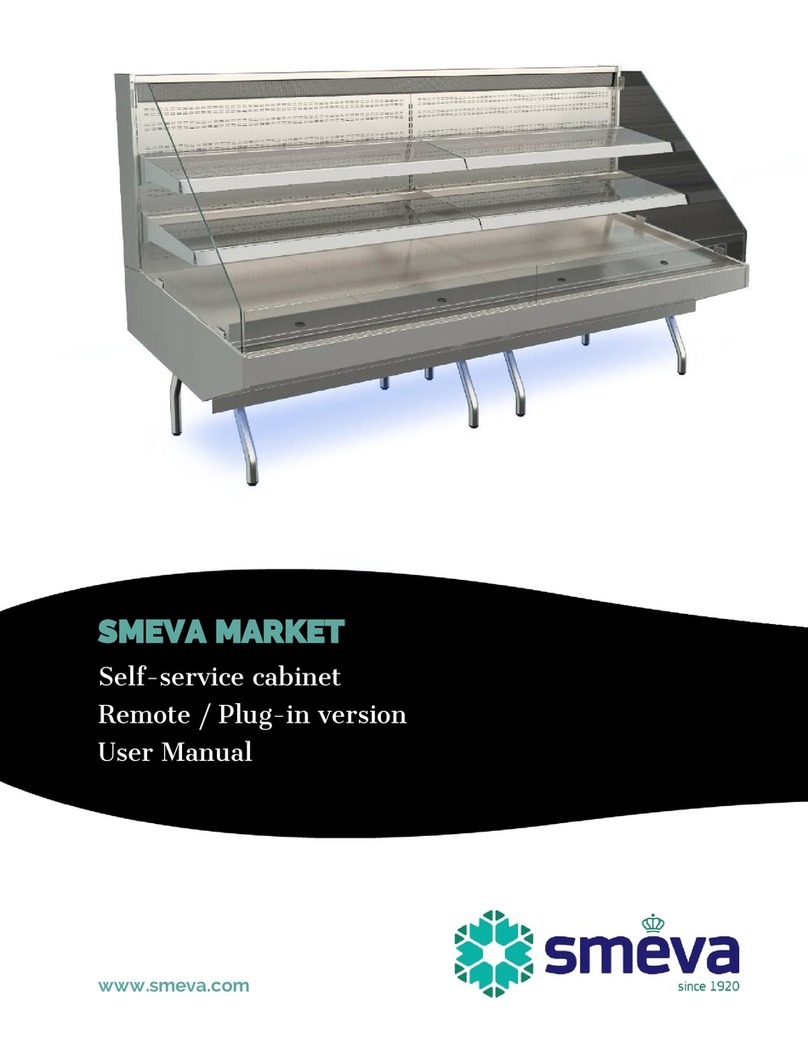
Smeva
Smeva Market user manual

Angelo Po
Angelo Po 0G0PEVTR Instructions of the appliance
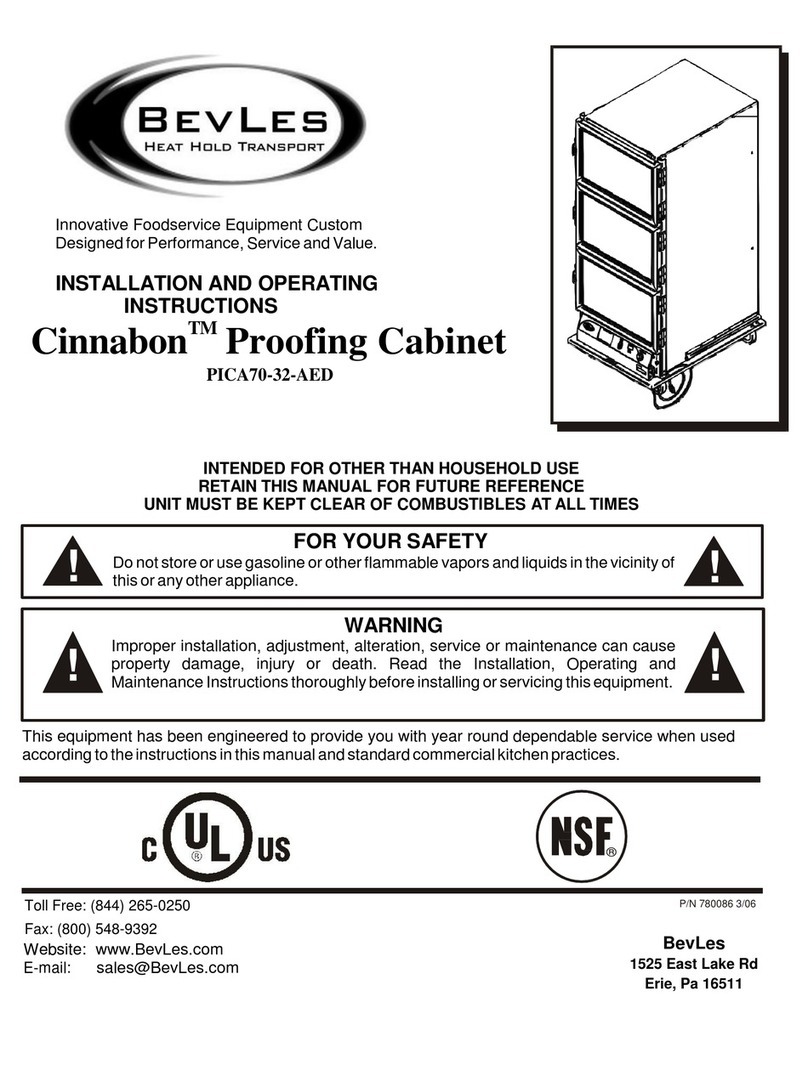
BevLes
BevLes Cinnabon PICA70-32-AED Installation and operating instructions
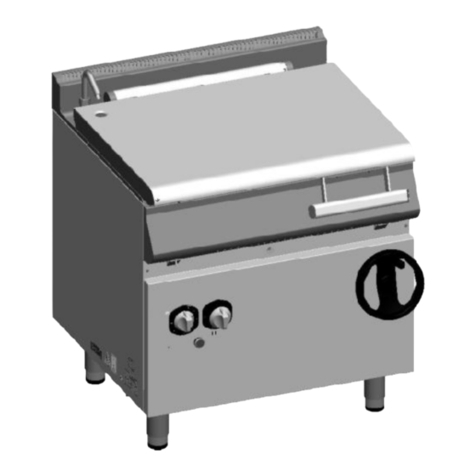
Inoksan
Inoksan 700 Series instruction manual
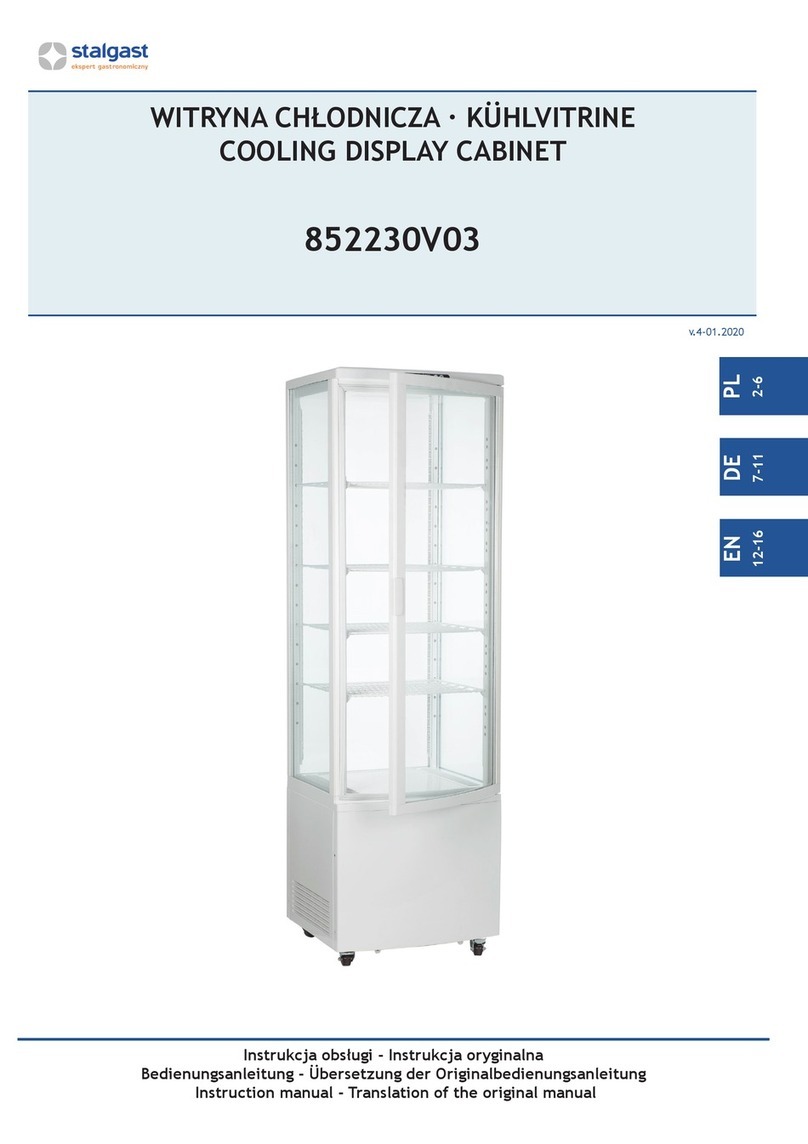
Stalgast
Stalgast 852230V03 instruction manual

Foster
Foster Eco 410 Original operation instructions
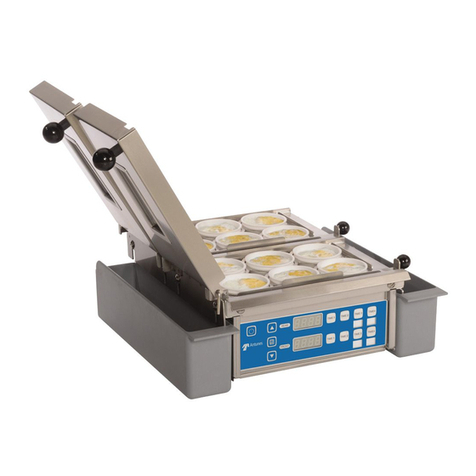
Antunes
Antunes Egg Station Dual Zone ESDZ-1200 Series owner's manual
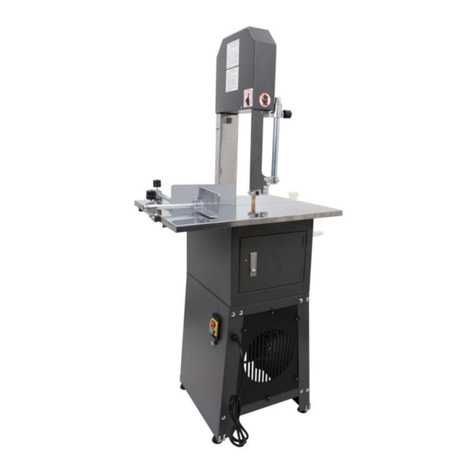
Valley Sportsman
Valley Sportsman 8725657 manual
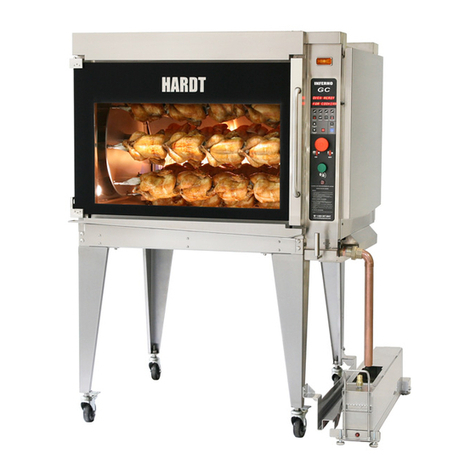
Hardt
Hardt INFERNO 3500 Operation manual
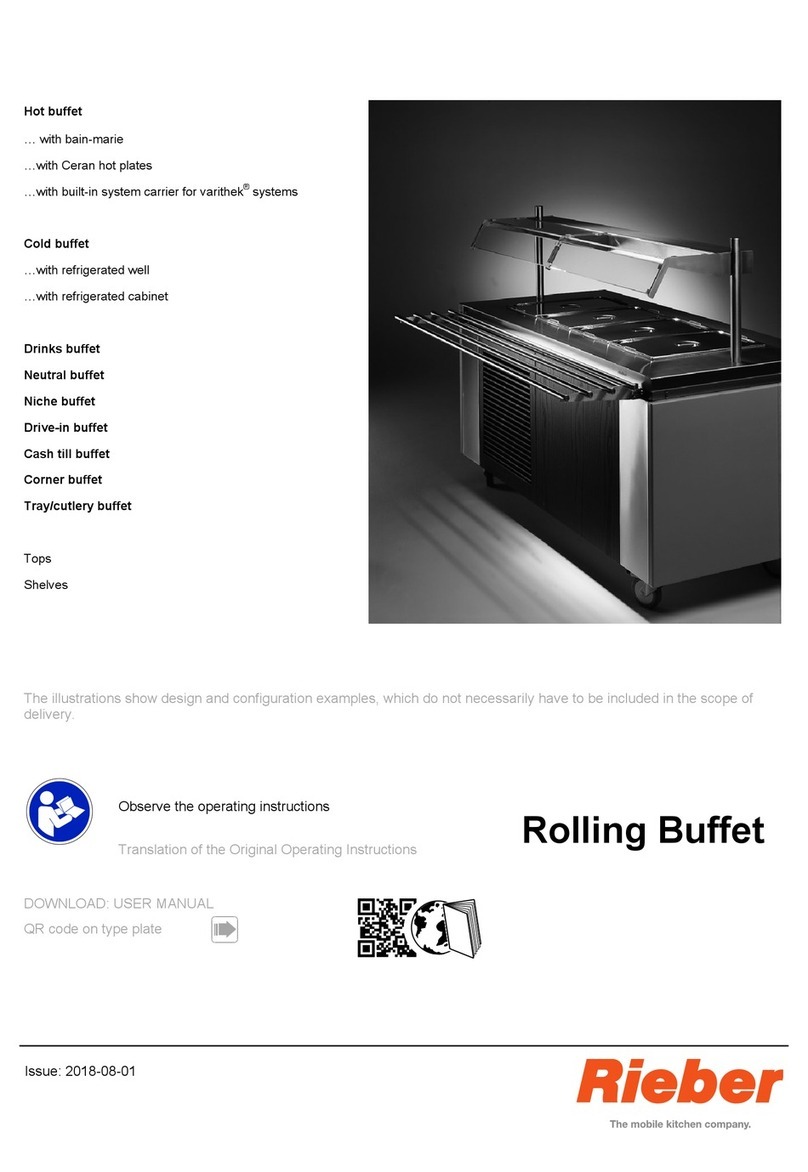
Rieber
Rieber Rolling Buffet Series Translation of the original operating instructions
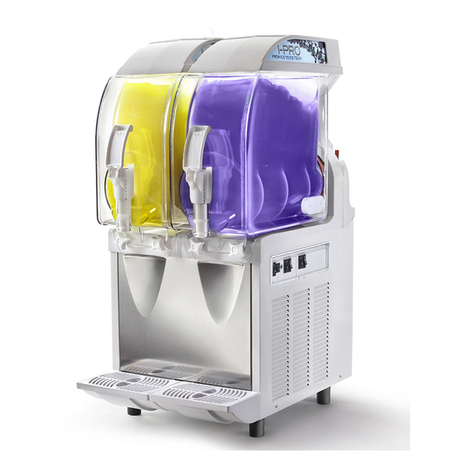
SPM
SPM IPro R290 Operator's manual
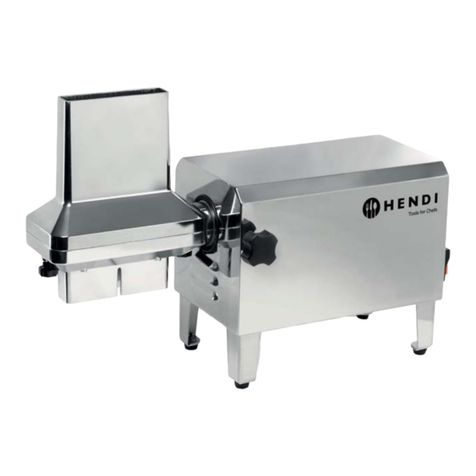
Hendi
Hendi 297360 user manual
